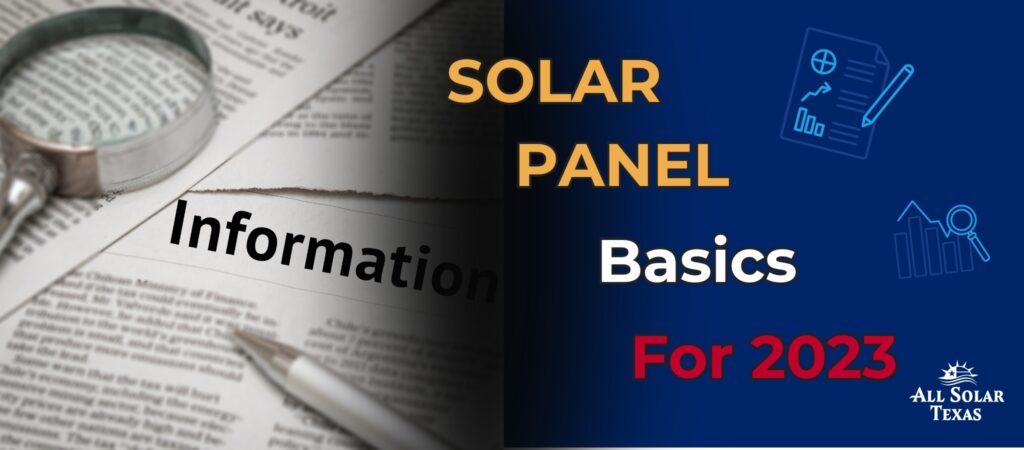Solar power has become an increasingly popular choice for homeowners looking to harness clean, renewable energy to power their homes. With advancements in technology and incentives, residential solar energy systems are now more accessible and affordable than ever before. By understanding the basics of solar power, homeowners can make informed decisions on whether or not to take advantage of this energy source.
Solar energy systems primarily consist of photovoltaic (PV) panels, which convert sunlight directly into electricity. This electricity can be used immediately, or it can be stored in batteries for later use. Residential solar power systems offer many benefits, including the potential to reduce monthly utility bills and lower one’s carbon footprint.
If you’re considering adding a solar energy system to your home, it’s crucial to understand the different components involved, the installation process, and the financial considerations. Make sure to research available incentives, such as the Section 25D residential tax credit, to help offset the upfront costs of the system. By doing your homework, you’ll be well-equipped to decide if solar power is the right choice for your home.
Solar Panel Basics
Photovoltaic Cells
Photovoltaic (PV) cells are the primary component of solar panels. These cells are responsible for converting sunlight into electricity. Most PV cells are made from silicon, which has the ability to both absorb light and conduct electricity. For the purpose, of when light strikes the PV cell, it causes electrons to move and create an electrical charge.
Solar Panel Array
A solar panel is made up of multiple PV cells. Typically, a panel comprises 60-72 solar cells, and these panels are connected together to form a solar panel array. The size of the array depends on the power needs of the home and the available space for installation. The solar panel array is connected to an inverter, which converts the direct current (DC) electricity generated into alternating current (AC) electricity in this case used by homes.
Efficiency
Solar panel efficiency is a measure of how much sunlight the panel can convert into electricity. The efficiency of solar panels has improved over the years, thanks to advances in PV technology. However, factors such as temperature, angle of the panels, and shading can affect the overall efficiency of the system.
To optimize efficiency:
- Install panels at an angle that maximizes sunlight exposure
- Keep panels clean and free of dirt and debris
- Monitor and address any shading issues
Maintenance
Solar panels are generally low maintenance, but to ensure optimal performance, some basic care is necessary. For instance, here are some simple maintenance tips:
- Clean the solar panels periodically, removing dirt, leaves, and other debris
- Inspect solar panels for any signs of damage or wear
- Check mounting hardware and connections for corrosion or loosening
Remember to always consult a professional for maintenance or repairs that require accessing the roof or handling electrical components.


Fort Worth: Solar Energy Technologies
Solar energy is derived from the sun’s rays, which is transformed into usable power through various solar technologies. As a clean, sustainable alternative to fossil fuels, solar power is becoming increasingly popular for residential use.
There are two main types of solar technologies for residential use: Photovoltaic (PV) panels and Concentrating Solar Power (CSP).
Photovoltaic (PV) panels are the most common form of solar technology for residential purposes. They work by converting sunlight directly into electricity through solar cells. The Solar Photovoltaic Technology Basics from the National Renewable Energy Laboratory (NREL) explains that the PV process is named after the photovoltaic effect, a phenomenon first discovered in 1954.
The key components of a PV system include:
- Solar panels (made up of numerous solar cells)
- Mounting systems to secure the panels
- Inverters to convert the direct current (DC) electricity generated by the panels into alternating current (AC) electricity
- Batteries for energy storage, if desired
- Wiring and other electrical accessories
Concentrating Solar Power (CSP) is another form of solar technology that uses mirrors to concentrate solar radiation, that generates electricity through a high-temperature process. While CSP is less common for residential use, it is widely utilized in large-scale solar projects such as solar power plants.
Some trends in residential solar technology include:
- Increased efficiency of PV panels, allowing for more electricity generation from the same amount of sunlight
- Integration of solar power systems with smart home technologies
- Development of solar roofing materials, such as solar shingles and tiles
- Advances in battery technology for improved energy storage
The Solar Energy Technologies Office (SETO) within the U.S. Department of Energy is responsible for advancing solar technology research and facilitating its adoption in the market. SETO is committed to making solar power more accessible and affordable for American households.
As solar energy technologies continue to evolve and improve, more homeowners are turning to solar power as a viable, eco-friendly option for generating electricity and reducing their carbon footprint.
Finding the Right Solar System in Fort Worth, TX
When considering residential solar power, it’s essential to choose the right solar system that suits your electricity use and location. In this section, we will discuss various factors to help you find the ideal solar system for your home.
System Size
The most crucial factor in determining the right solar system is its size, and should be based on your home’s electricity consumption. Therefore, when calculating the appropriate system size, consider the following:
- Review your electricity bills to determine your average monthly consumption (in kWh).
- Calculate the daily use by dividing the monthly consumption by 30 days.
- Divide the daily consumption by the average number of peak sunlight hours in your area to determine the required system size in watts.
Keep in mind that your system’s performance may vary depending on factors like weather and shade.
Solar Installation
Proper solar panel installation is vital for the overall performance and longevity of your solar system. Here are some key aspects to consider during installation:
- Choose a location with maximum sun exposure and minimal shading throughout the day.
- Ensure the roof can support the weight of the solar panels.
- Hire a professional residential solar power system installer.
Wiring and Inverters
Wiring and inverters play an essential role in converting the generated solar energy into usable electricity for your home. Here are some important details:
- Ensure correct wiring to prevent energy loss and ensure the system’s safety.
- Use an inverter to convert the direct current (DC) produced by the solar panels into alternating current (AC) used by your home appliances.
- Choose an inverter with the right capacity, considering your system size and voltage requirements.
By understanding these factors and working with a professional, you can find the right solar system for your home.


Costs and Financing of Residential Solar, Fort Worth
Financing Options
There are various financing options available to homeowners considering solar power for their homes. These options include:
- Solar loans: These loans allow homeowners to buy a solar energy system outright while making monthly payments, often with no money down.
- Leases and power purchase agreements (PPAs): These options provide homeowners access to solar panels with no upfront cost. Solar companies retain ownership of the system and the homeowner pays for the solar power generated each month.
It’s essential to research different solar companies and compare their offerings to determine the best fit for your needs and budget.
Tax Breaks
A significant benefit of going solar is the availability of tax breaks at the federal and state levels. The federal Investment Tax Credit (ITC) provides a tax credit equal to 26% of the system’s cost, which is applied to your income taxes. Additionally, there may be more state and local incentives to help offset the cost of the solar energy system.
Net Metering
Net metering is a billing arrangement between a homeowner and their utility company. It allows homeowners with solar energy systems to receive credit for the excess electricity their system generates and feeds back to the grid. Many utility companies offer net metering, which can save homeowners money on their electricity bills over time.
Savings
Going solar can result in substantial savings on electricity bills over time, largely thanks to net metering, tax breaks, and competitive financing options available. The actual you’ll save varies based on electricity prices in your area, the size of your solar energy system, and your home’s energy consumption.
Keep in mind that soft costs, such as permitting and installation, can impact the overall cost of a solar energy system. However, the savings provided by solar energy often outweigh the initial costs, therefore making it a smart investment for many homeowners.
Industry and Standards
SEIA and EnergySage
The solar industry has seen tremendous growth in recent years, thanks to advancements in technology, decreased costs, and increased accessibility for residential consumers. Organizations like the Solar Energy Industries Association (SEIA) and EnergySage play a vital role in promoting solar energy and helping consumers navigate the solar market.
SEIA is a trade association that represents the U.S. solar industry’s interests, advocating for policies to expand the use of solar power and working to create a strong solar industry to benefit the economy and environment. EnergySage, on the other hand, is an online marketplace that connects homeowners with pre-screened solar installers and provides tools to compare solar quotes and financing options, in order to make solar adoption simpler and more transparent.
Consumer Protection and Contracting Terms
As solar power becomes increasingly popular, consumer protection is crucial to ensure the fair treatment of customers and maintain trust in the industry. The SEIA has developed a Solar Business Code, which establishes best practices for solar companies to follow regarding transparency, customer protection, and responsible business practices. Additionally, SEIA offers resources and guidance for residential solar customers to better understand solar financing options, such as leases, power purchase agreements (PPAs), and solar loans.
When it comes to contracting terms, it’s essential for homeowners to be familiar with the specifics of their solar contracts. Some important terms to be aware of include:
- System size and output: This determines the number of solar panels installed and the amount of energy they’ll produce.
- Total cost and payment terms: This includes the overall project cost, along with any down payment, monthly payments, and the duration of the contract.
- Warranties and maintenance: This section outlines the performance guarantee provided by the installer and the repair or replacement of equipment if necessary.
- Ownership and transferability: This clarifies who owns the solar system and the terms of transferring the contract if the homeowner sells their property.
By being informed about industry standards and contracting terms, homeowners can confidently choose the best solar power system for their needs.


